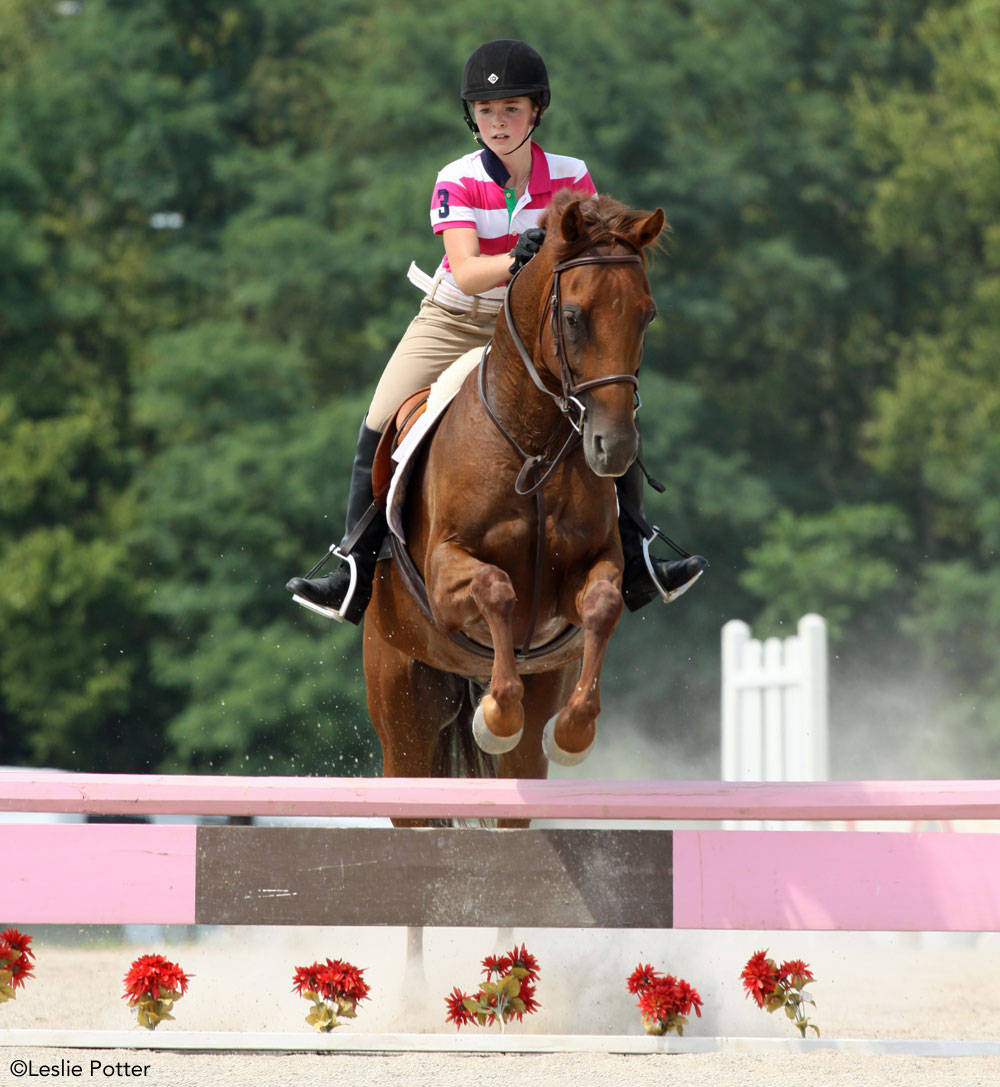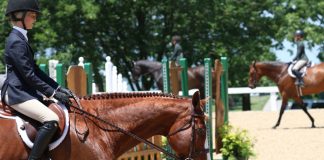
A: Horses often prefer to jump one direction more than the other, whether it’s on a large circle (cantering jumps on the left or right lead) or a straight line (headed either toward or away from the gate or barn). Part of training a horse to jump, however, is to make sure their performance is consistent regardless of the direction. Here are a few things to consider.
First, go back to flatwork. Spend time trotting and cantering back and forth over simple poles on the ground or small crossrails. Focus on riding a track that takes your horse directly across the center of the obstacle. Use cones or other markers to help you visualize your track. Then halt in a straight line. If your horse shifts his haunches or forehand off the track, gently push him over with your leg. Don’t settle for “good enough.”
Next, work on cantering medium-sized circles (about the diameter of a longe line), keeping your horse round and bent in the correct direction. Lay a single ground pole across your circular track, and then eventually graduate to a small crossrail. Make sure you travel in both directions so your horse becomes soft and supple regardless of which lead he’s on. Any time you feel your horse bulge or push through your inside or outside leg, in an effort to escape the circular track, correct him with your leg aids.
Finally, consider enlisting some help from a riding instructor in your community. Having someone on the ground who can evaluate errors in your position or missing elements in your horse’s training can benefit both you and your horse. Keep in mind that once a horse begins to refuse it can become a habit. Eventually you’ll begin to anticipate the refusals, which undermines your self-confidence and affects your position in the saddle. Then your horse’s performance will suffer further. It’s sort of a vicious cycle, but fortunately some professional instruction should give you the insight, and the encouragement, you need.






Good article.